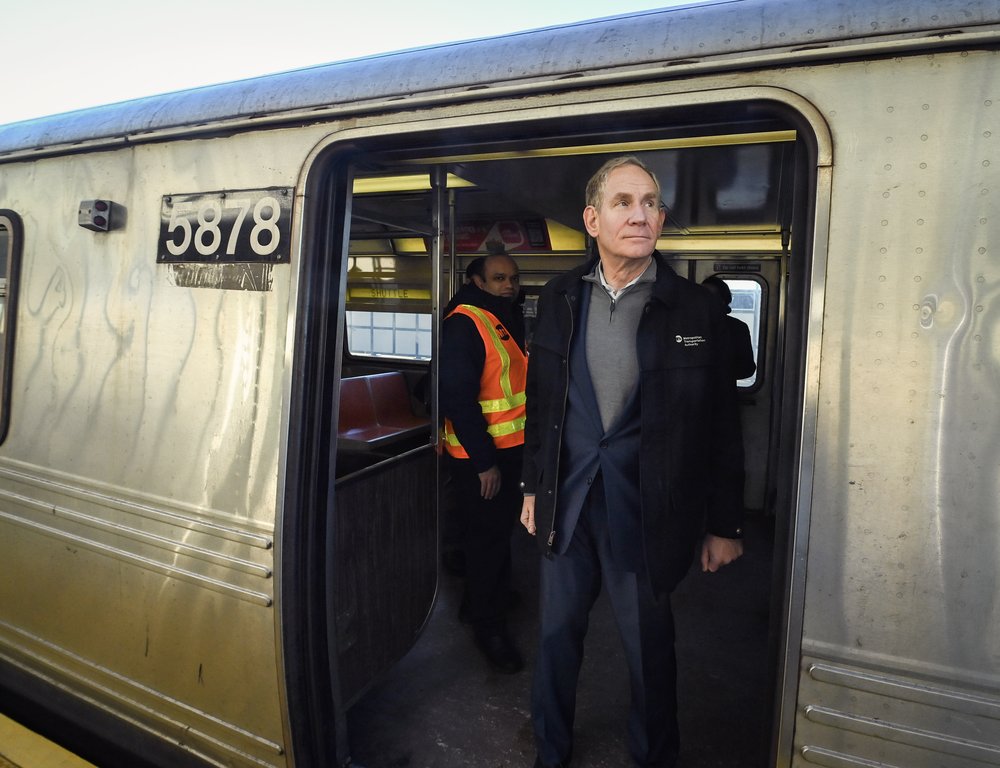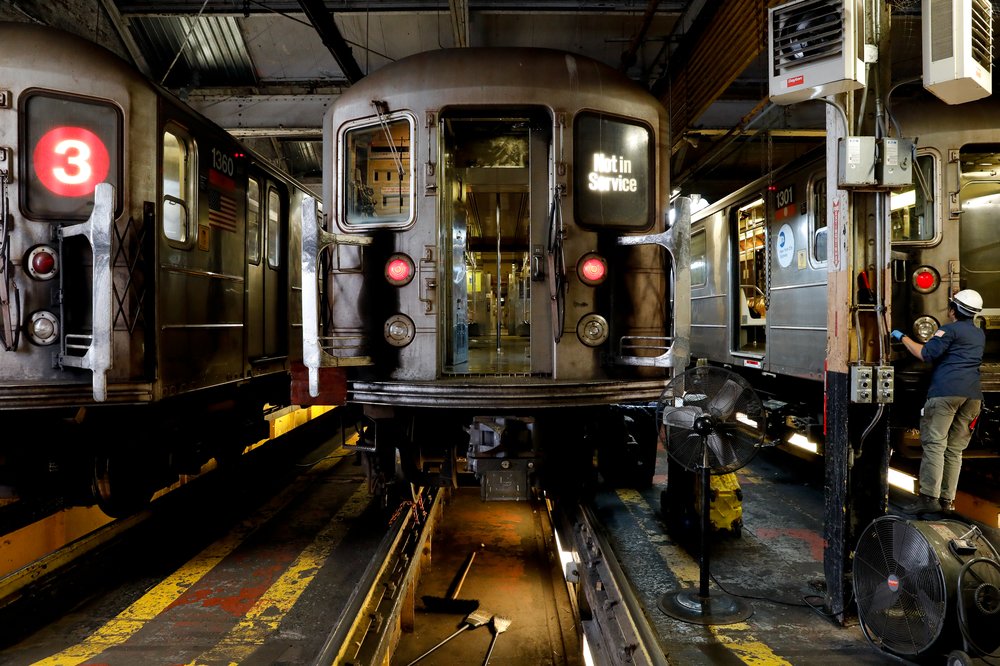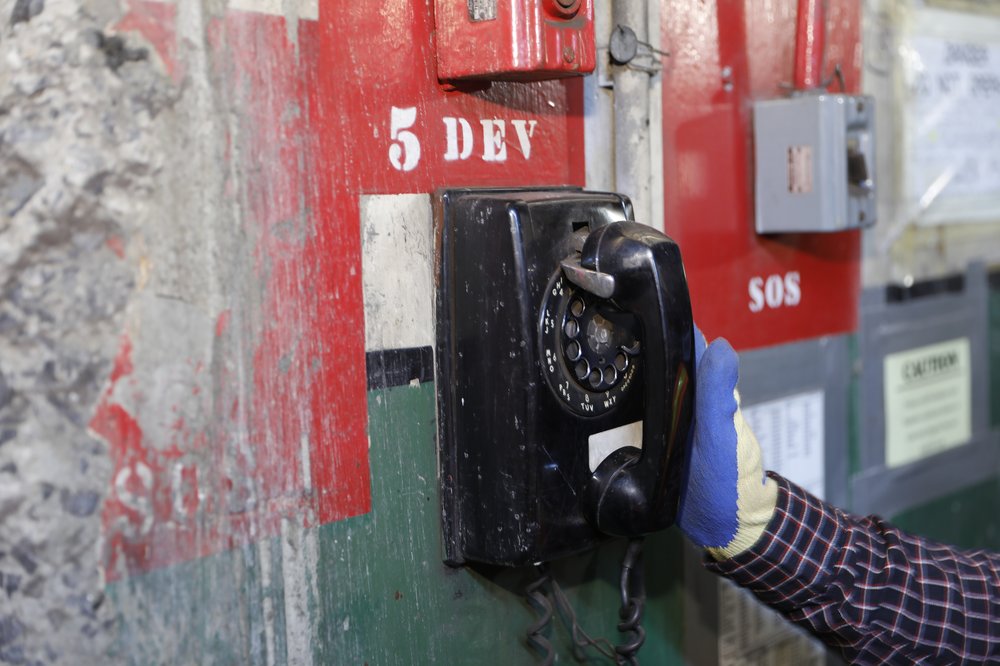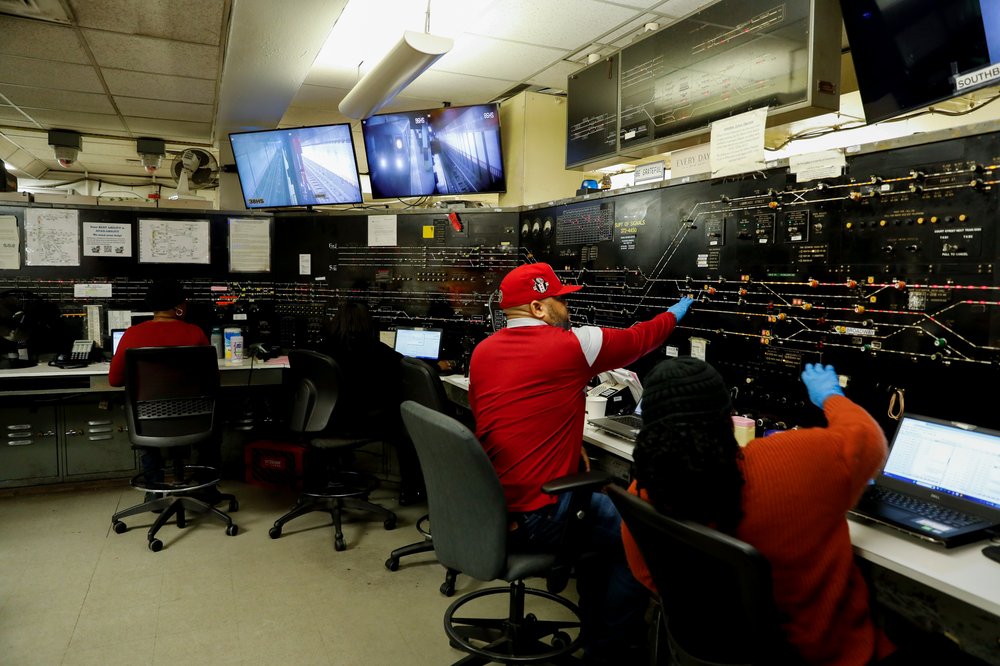To fund NYC subway fixes, MTA must undo decades of distrust
Feb. 6, 2025, 6 a.m.
MTA Chair Janno Lieber is heading to Albany on Thursday to ask lawmakers to fund the largest construction program in the agency's history.

MTA Chair Janno Lieber, who's fresh off a yearslong political fight to impose a congestion pricing toll on drivers in the heart of Manhattan, will head to Albany on Thursday to ask a joint session of the state Legislature for additional revenue to fund his agency’s $65 billion construction plan to rescue New York City's mass transit system from the brink of collapse.
But persuading lawmakers to fund the plan — likely through an unpopular new set of taxes — is just one of the daunting challenges Lieber faces. The MTA is at a crossroads, and to avoid returning to the recurring transit nightmares of 2017's “Summer of Hell,” it must also restore the public’s trust.
Over the last month, Gothamist reported on the MTA’s antiquated, fragile infrastructure that routinely ruins commutes. Many electrical substations that power subway trains rely on equipment dating back to the 1960s that frequently explodes. Several train lines are unable to run closer together because they are being monitored by workers operating 1930s-era technology. Over the course of nearly 100 interviews, riders acknowledged the system was in dire need of upgrades. But they also said they had no faith the MTA could pull it off.
“This is not the subway system that a modern city should be proud of,” B train rider Jerome Noel said. “Maybe the improvements that they’re making behind the scenes are going to get it there … [but] why are we having this conversation where the technology we’re improving is that old?”
A train commuter Luis Burgos said he thinks the subways should be more reliable given all the money he pays in fares and taxes.
“What are you offering me? What am I getting from that $2.90?” he said. “I don’t see any real great changes to infrastructure.”
The MTA has served as a political punching bag for decades, which has in many cases led lawmakers to call for slashing its funding. Those calls will only intensify as state lawmakers weigh a new tax to fund the MTA’s construction plan.

Many subway delays can be traced back to the poor state of the MTA's train yards, where workers struggle to repair the city's oldest subway cars.
“Spending like drunken sailors won’t fix the problem — only a complete forensic audit and commitment to reducing absurd consultant costs will,” said Rep. Mike Lawler, a Hudson Valley Republican who is mulling a run for governor next year. “It’s time Kathy Hochul showed some leadership in getting the MTA under control.”
Lieber has fought against lawmakers like Lawler for years, arguing that type of rhetoric threatens to strip away funding needed to improve New York City commuters' lives. Now, the MTA boss faces his toughest battle yet as he aims to convince the lawmakers he’s reformed the MTA into a trustworthy steward of taxpayer dollars. His push comes more than a month after the leaders of the state Legislature vetoed the MTA’s construction plan, claiming they wanted to negotiate over its funding through the state budget that’s due by the end of March.
A history of unfulfilled promises
The MTA's history can largely be told through the projects it failed to realize.
When then-Gov. Nelson Rockefeller formed the MTA in 1968, he unified the subways, commuter railroads, and tolled bridges and tunnels under one agency. Transit leaders rolled out a plan that year to use state tax dollars to build roughly 50 miles of new train lines over a decade, including the Second Avenue subway, new lines in Queens and subway extensions down Utica and Nostrand avenues in Brooklyn.
More than a 50 years later, fewer than eight of those miles are finished. Most never broke ground or were abandoned after construction began. The MTA did complete some large projects, typically after years of delays and billions of dollars in cost overruns.
The agency’s East Side Access project, which opened in 2023 as the new Grand Central Madison terminal, ran more than a decade behind schedule and upward of $8 billion over its initial budget.

A vintage rotary phone is the only line of communication to the outside world in an underground electrical substation that powers 2 trains between Harlem and the Bronx.
But Lieber, the 14th MTA chair, argues he’s different from all his predecessors. His $65 billion proposed construction plan de-emphasizes splashy projects that yield groundbreaking ceremonies and ribbon cuttings for politicians in favor of “state-of-good-repair” work to improve efficiency and keep the system running.
"The first thing we’re going to do is prioritize state of good repair," Lieber said. "Nobody ever said we want to invest in shops and yards because that ain’t sexy."
"We’re putting down a principle that we’re not going to neglect it like the capital programs in the past have," he said.
Sky-high prices give taxpayers sticker shock
As Lieber and his colleagues argue they lead a “new” MTA that completes projects “better, faster [and] cheaper” than previous regimes, the agency’s construction costs remain among the highest of any mass transit system on the planet.
The Second Avenue subway's planned $7.7 billion extension into East Harlem, for example, is slated to be the costliest per-mile extension of a subway line in human history, according to researchers at the Transit Cost Project at NYU.
Lieber has argued the high cost of construction work is unavoidable in New York City, but notes that he’s made effective reforms. In 2019, he worked with state lawmakers to require the MTA to use a contracting technique called “design build,” which turns over much of construction management to private contractors. On East Side Access, the MTA managed more than 60 different contracts. But through design build, MTA officials said they’ll only need to oversee one master contract for many large projects.
Lieber also said he cut the agency’s expenses by 3% in 2024, despite declines in productivity among his workforce. During a panel discussion with the Citizens Budget Commission last week, Lieber pointed to an MTA analysis showing workers are calling in sick far more often than before the pandemic, which hinders his ability to save money on labor costs.
“People take all their sick days now, and then they take unpaid sick [days], and then they work overtime and they make enough money,” he said, blaming the problem on the state’s Paid Family Leave law that went into effect in 2018.
Alon Levy, one of the lead researchers on NYU’s Transit Cost Project, acknowledged Lieber has taken steps to save the MTA money by completing projects on time — but accused him of overestimating the price tag for projects so his team could finish work under budget.
“Janno Lieber, like quite a lot of American transit managers in the last 20, 30 years, measures himself not by absolute costs, but by costs relative to budget,” Levy said. “This means if the budget is inflated and costs come a little bit under it, it is considered a success, even if by objective standards the cost remains very high.”

Trains that run over the Manhattan Bridge face regular delays because MTA workers at DeKalb Avenue use antiquated tech to track subways' movements.
Levy said the MTA’s high costs are partially caused by the agency not buying “off-the-shelf” products and instead asking its suppliers to customize everything from signals to train cars to meet specific requirements of the MTA, which increases the cost.
Utility relocation remains one of the biggest reasons for New York City's high construction costs, according to Levy. Navigating the subterranean tangle of Con Ed, National Grid and city water pipes under the streets often requires the MTA to hire a specialist because there is no single map detailing the location of underground infrastructure.
MTA officials said Levy's analysis ignores the agency's recent successes, like reducing the cost of subway signal upgrades by as much as 50% on the G line compared to the agency's previous projects or the speedy completion of repairs to the L train's East River tunnel in 2019. They also pointed to their recent work to add elevators to dozens of train stations, making them accessible to people with disabilities.
“These are cartoonish critiques of historical construction costs from another era," MTA spokesperson John McCarthy wrote in a statement. "In the previous decade before current leadership, an average of just 2.5 ADA stations were started annually; now it’s 11.4 new stations per year. That’s more than quadruple the rate of progress and shows how today’s MTA gets it done for New Yorkers—project by on-time, under budget project.”
Years of deferred maintenance
The aging state of the city’s mass transit infrastructure is largely the result of decades of politicians redirecting funds earmarked for state-of-good-repair work, according to experts like Mitchell Moss, a professor at NYU's Wagner School for Public Service who informally advised city transportation officials for decades.
Moss pointed out that in the 1990s, then-Gov. George Pataki cut state funding for the MTA’s construction plans, which forced the agency to take on debt it’s still paying off. Now, debt payments make up 14% of the agency’s operating expenses.
“Pataki permanently undermined the MTAs capacity to get state funds, forcing it to rely more on the fare box and more on borrowing,” said Moss.
Moss also pointed out that previous Gov. Andrew Cuomo — who appointed Lieber to lead the MTA days before resigning — redirected money for maintenance work to rush the completion of the Second Avenue Subway's first three Upper East Side stations by the end of 2016. Some maintenance work throughout the subway was also put on hold the same year because state lawmakers delayed approval of the MTA’s capital plan by 18 months — something agency officials are trying to avoid this year. A year later, the subway's reliability collapsed.
Rich Azzopardi, a spokesperson for Cuomo, said New Yorkers should not blame the subway failures on the former governor's push to finish the Second Avenue subway.
“Monday night quarterbacking from revisionist historians aside, the Second Avenue subway was ‘this close’ to getting done for decades, only to get besieged with delay after delay,” Azzopardi said. “It was Gov. Cuomo who got it done and fought tooth and nail for a subway action plan that was needed to fix the system.”
Still, Lieber is now warning the MTA should prioritize fixing the city’s existing transit infrastructure before building new lines like Hochul’s proposed Interborough Express, or IBX.
“It’s great to build shiny new palaces,” Lieber said. “We love making new lines, we’re thrilled about the idea of the IBX, which is going to connect so many people to transit, but we got to make sure that the system we have doesn’t fall apart.”
Now, as lawmakers in Albany fight over the future of the MTA’s funding in Albany, transit proponents like state Sen. Andrew Gounardes of Brooklyn argue the public has no choice but to support a new tax for the MTA — and trust Lieber and his team have actually reformed the agency.
“ I understand the public would be frustrated by this [tax],” Gounardes said. “But they're going to be a lot more frustrated when the transit system simply falls apart and there's nothing we can do to fix it.”
- heading
- State of Collapse
- image
- image
- None
- caption
- body
About this project
Gothamist reporters spent three months investigating the state of New York City's subway system, going behind the scenes at transit facilities and interviewing more than 100 riders and MTA employees along the way. They found the city's subways aren't just on the brink of collapse — the breakdown of the aging system has already begun.
Read the rest of the series here:Part 1: How the MTA put riders on the fast track to ruin
Part 2: NYC subways use electrical equipment that's so old it frequently explodes
Part 3: Driving blind: NYC subways steered by 1930s tech, paper maps and a lot of hope
Part 4: 'A lot more breakdowns': NYC's oldest subway cars are fixed in crumbling repair shops
Part 5: ‘Like cancer’: MTA’s trains depend on rusty, corroding columns from the early 1900s